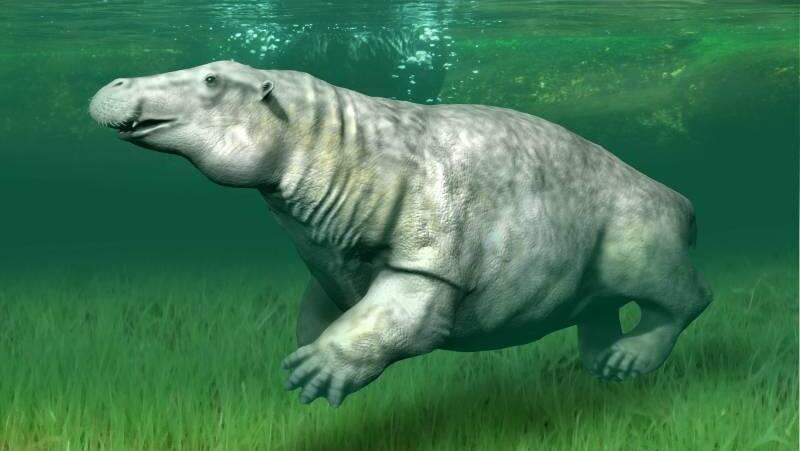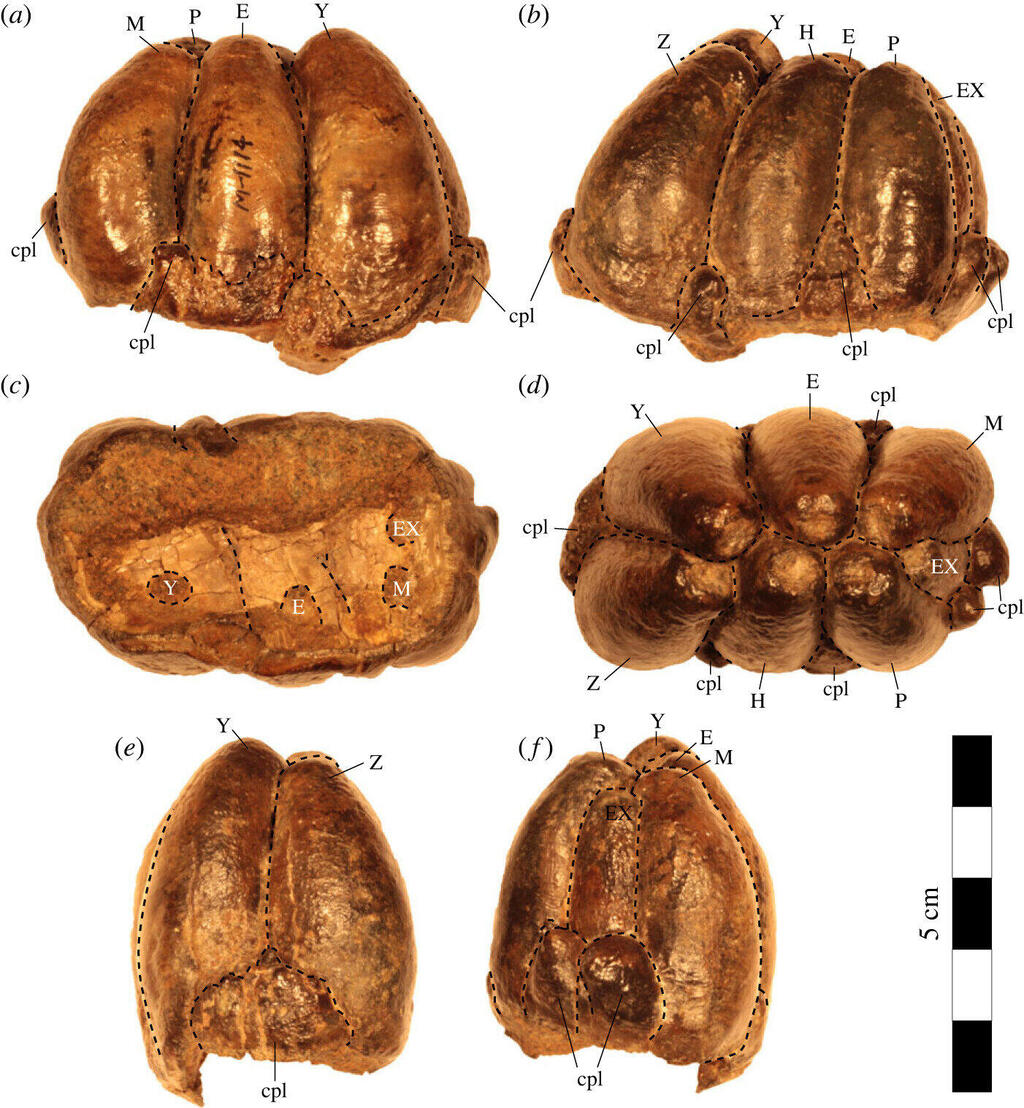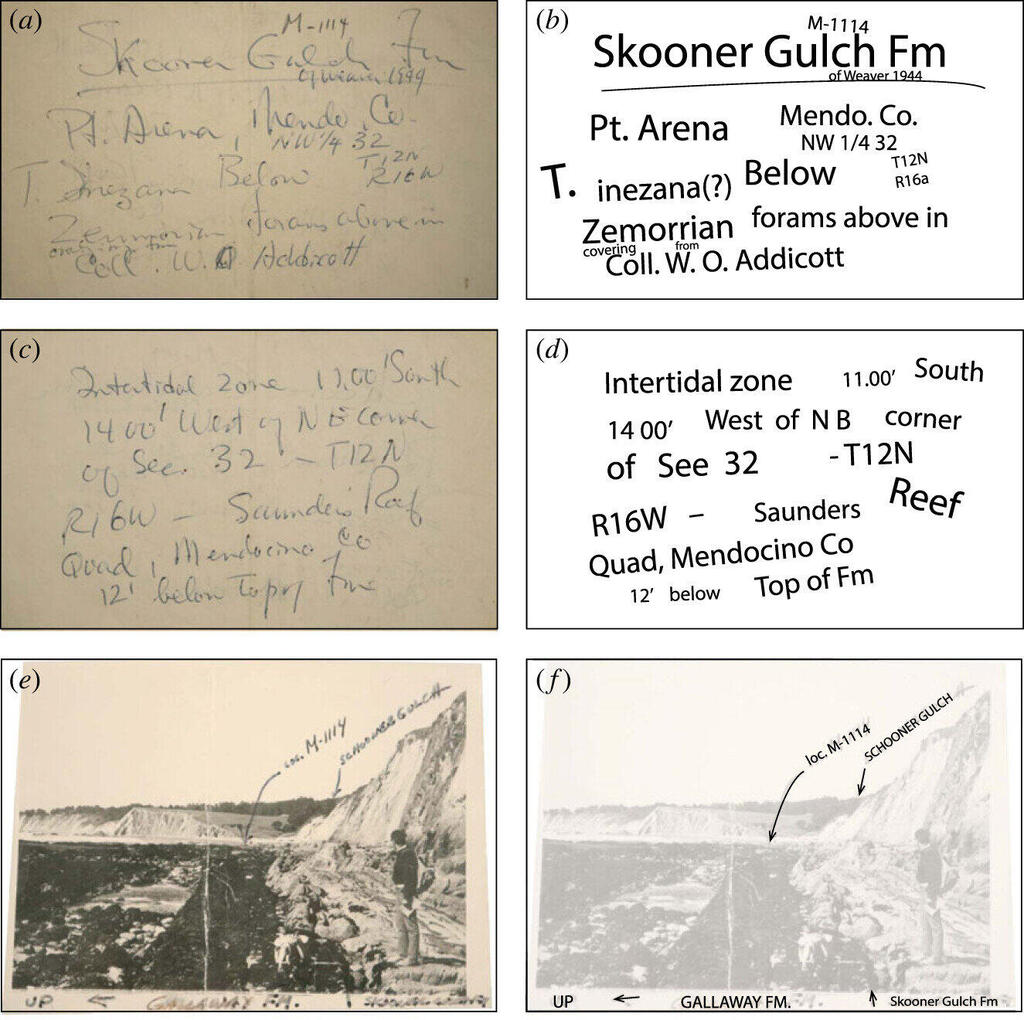It resembled a hippopotamus, was an herbivore, and lived in what is now the Skooner Gulch Formation in California. An extinct marine mammal that was previously unknown to science was recently discovered by a pair of paleobiologists in collaboration with the Smithsonian National Museum of Natural History.
More stories:
In a study published in the Royal Society Open Science journal, Kumiko Matsui and Nicholas Pyenson described the detailed examination they conducted on an uncataloged tooth found in the museum’s vast collection, and what they learned from it.
3 View gallery


Desmostylus resembled a small hippopotamus, measuring over two meters in length and weighing 200 kg
(Illustration: Wikipedia)
Previous research showed that, millions of years ago, along the shores of what is now the northern Pacific Ocean, there were species of marine animals that bore some resemblance to the modern-day hippopotamus.
The creature, called Desmostylus, belonged to the extinct order of marine mammals known as Desmostylia. They reached a weight of up to 200 kg and had large and round bodies, small ears and snouts, specialized teeth suited for a marine vegetarian diet, hoofed feet, and a short tail.
Desmostylus resembled a small hippopotamus, measuring over two meters in length and weighing 200 kg. It was considered relatively adaptable to swimming and to its marine habitat compared to its close relatives, which moved slowly.
According to estimates, it lived in waters reaching depths of up to 30 meters, near the coastlines, or even in freshwater bodies and river estuaries.
3 View gallery


The tooth found at the Smithsonian
(Photo: Royal Society Open Science (2023). DOI: 10.1098/rsos.221648)
In the new study, researchers identified a Desmostylus tooth that had been found within the extensive collection of the National Museum of Natural History, which hadn’t been studied since the 1960s.
Field notes were found alongside the tooth, describing how the specimen was discovered in excavations conducted at Skooner Gulch in northern California.
Matsui and Pyenson examined the tooth in order to learn more about its possible origins. The team's work included measuring the tooth and noting its physical characteristics in comparison to others of its kind.
The molar was quite large, measuring 6.35 cm by 3.8 cm. It was also darker and more polished and heavier than expected and, notably, it had six large points, with its enamel being exceptionally thick.
3 View gallery


Notes that accompanied the tooth found by researchers
(Photo: Royal Society Open Science (2023). DOI: 10.1098/rsos.221648)
Considering all the physical and visual findings together, the tooth’s characteristics strongly indicated that it belonged to a Desmostylus. The researchers noted that despite its appearance, the tooth’s features suggested that the creature likely behaved more like a sea lion than a hippopotamus.
It most likely consumed seaweed and other marine vegetation, spending most of its time in shallow parts of the sea. The tooth's features also indicated that it was older than the majority of other samples found throughout the years, suggesting that it was approximately 22 million to 23 million years old, representing the early Miocene epoch.

